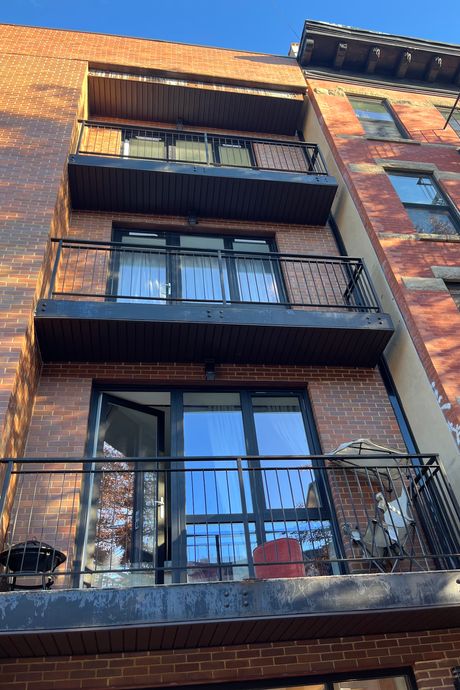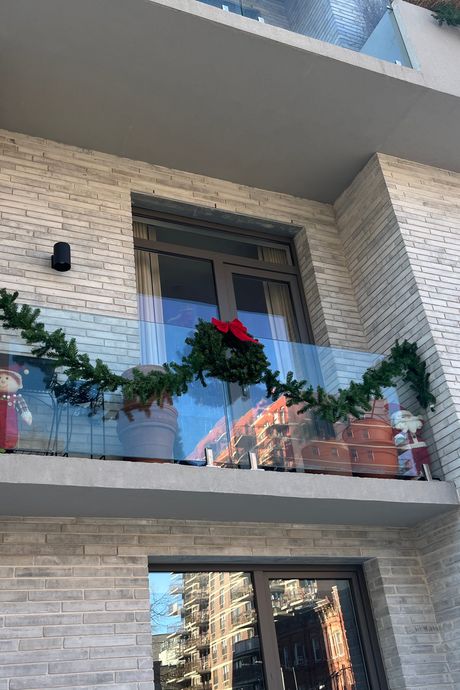Pros and Cons of Juliet Balconies in NYC Apartments

In our era of ballooning pant legs and reclining theater seats, as Brooklyn pantries overflow with Wegmans bulk and Cybertrucks tear through Tribeca, one feature of the cityscape has been slimming down: the balcony. Hardly wide enough to stand on, sometimes as thin as a phone case, teensy balconies have been striping the façades of new, multifamily buildings across Brooklyn and Queens at a rate inversely proportional to their usefulness. In my stretch of Brooklyn, a six-story rental that went up in 2023 features 11 balconies no wider than 18 inches — only one of which shows any sign of life, a single metal chair, squeezed as tight as my stomach in pre-baby jeans. Down the street, another building from the same year has balconies so slight that a tenant’s fold-down camp chair can’t unfurl its arms. A few blocks east, at another new development where condos start at $925,000, a glassed-in rectangle has barely a foot of usable space.
Neighbors made use of skinny balconies with a camp chair with folded arms (left) and holiday décor (right). Adriane Quinlan.
Neighbors made use of skinny balconies with a camp chair with folded arms (left) and holiday décor (right). Adriane Quinlan.
In real-estate jargon, these are “Juliet balconies” — a wildly misleading term, if you ask me. Shakespeare describes Romeo watching Juliet with “cheek upon her hand” — an image that conjures a balcony where one would have room to lean over. (The Globe recently staged the scene with a platform deep enough to throw a dinner party.) Still, the name makes sense to broker Andrea Saturno-Sanjana, at least poetically. “It’s more of a romantic gesture,” she says. “It’s designed to generate hopes and dreams,” per appraiser Jonathan Miller, who prefers the term “decorative balcony” since that’s what they are: a balcony you can’t use. “They allow the developer to say they have outdoor space, when they don’t really.” Designers Simon Doonan and Jonathan Adler mocked their Juliet balconies as “Evita balconies” in a 2013 piece in the New York Times, where they described using theirs to throw down keys or send smokers. Which is how my aunt, Eileen Quinlan, has used hers since she bought a Williamsburg condo in 2008. Eleven years later, with two teenagers, it doubles as a soda fridge in winter and a summer respite for the family guinea pigs, Butter and Biscuit. “I think it’s good for them to get fresh air,” she says, though she has long been annoyed by the fact that the balcony isn’t big enough for her to get fresh air: “I do feel resentment.”
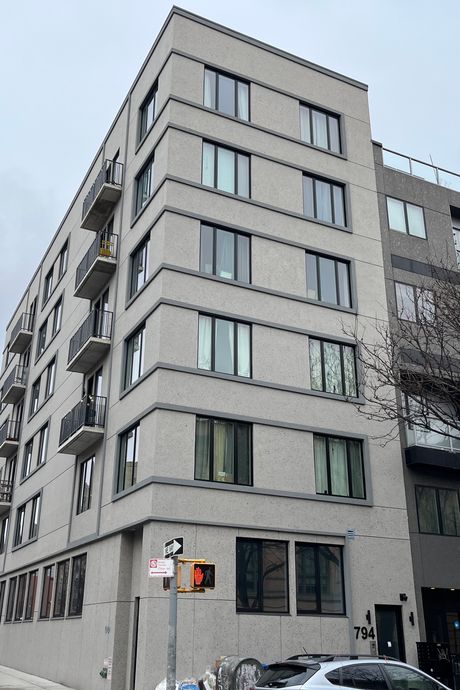

Deeper balconies can clutter up with bikes and strollers, but balconies too thin to actually use remain as attractive — and as useless — as the day they went up. Adriane Quinlan.
Deeper balconies can clutter up with bikes and strollers, but balconies too thin to actually use remain as attractive — and as useless — as the day th…
Deeper balconies can clutter up with bikes and strollers, but balconies too thin to actually use remain as attractive — and as useless — as the day they went up. Adriane Quinlan.
Still, she bought the place. There is often a considerable amount of distance between what buyers want in outdoor space and what they’re willing to pay for it — or give up for it. Going more than two feet and six inches over the sidewalk, or about the width of a classic fire escape, means cutting into the interior space. “During the pandemic, everyone said they wanted outdoor space,” Saturno-Sanjana explains. “But unless there’s a really fundamental, nonnegotiable reason for it, they’ll give up outdoor space for more indoor space.” That’s what closing records show, even during COVID, adds Miller. “The mantra at the time was that people were paying more for outdoor space — that they were demanding it,” he says. “That became like a fact, and it really wasn’t.” What the data actually showed was that units that had any outdoor space tended to sell faster. “It wasn’t a dollar premium as much as it was a timing premium,” Miller said. “They had a selling point.” Or as Patrick Smith, another broker, puts it: “No one has ever come to me and said, ‘My search criteria includes a Juliet balcony.’ But everyone has been very open and happy to have a home with a Juliet balcony.” And that’s a game changer for developers who are currently in an “arms race,” according to John Walkup, the real-estate data analyst. “Anytime someone tries a new concept like a pet spa or a golf simulator — and it works — everyone copies it.”
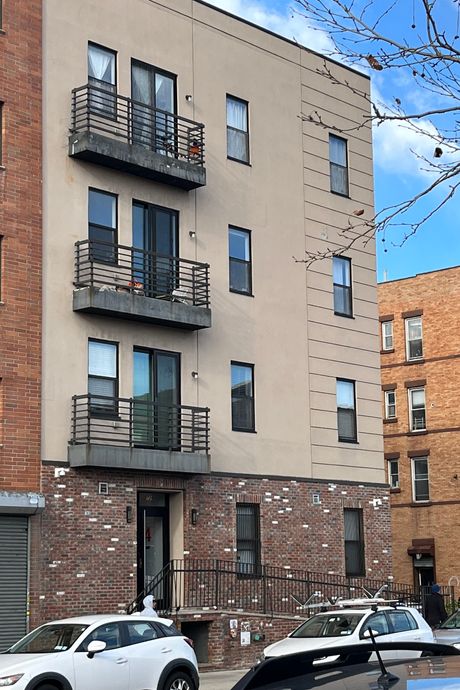
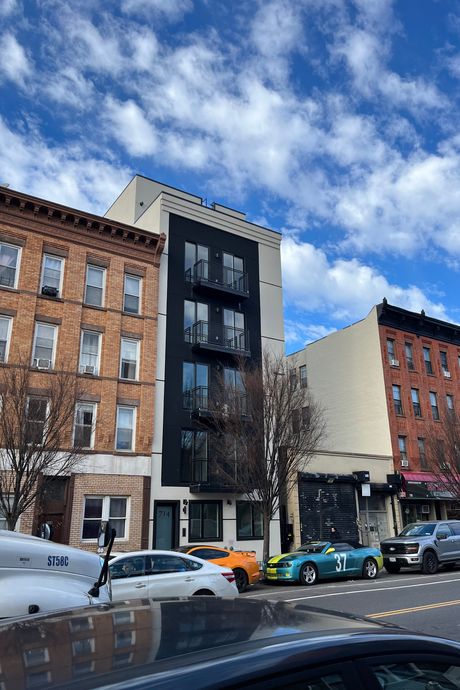
Thin balconies started catching on in the 2000s but have been popping up more and more as renters and buyers search for outdoor space. Adriane Quinlan.
Thin balconies started catching on in the 2000s but have been popping up more and more as renters and buyers search for outdoor space. Adriane Quinlan…
Thin balconies started catching on in the 2000s but have been popping up more and more as renters and buyers search for outdoor space. Adriane Quinlan.
Since buyers are paying less per square foot outside, developers aren’t throwing cash at extended balconies. Deeper balconies require more insulation to keep heat in, and they’re more expensive to build, since they might need to be cantilevered. Those costs aren’t huge, says Walter Marin, an architect and zoning expert. “But remember, developers aren’t looking at one balcony; they’re looking at 50 balconies. Economics is why they’re so small.” Landlords may like a teeny balcony for other reasons, too: Bigger balconies can incentivize people to grill (illegal) or to sit on ledges (dangerous).
Photo: Adriane Quinlan
Just like the New Yorkers who regret moving into places with backyards, many others who thought they wanted outdoor space, even a sliver of it, are finding there are downsides to balcony life. New York streets are noisy. And our air is sooty. “Even for people who thought they were going to sit out on that balcony, they have to wash the furniture all the time,” Saturno-Sanjana says. “So how much are you really going to use it?” (Balconies can become bike storage or stroller storage, she adds, but the soot problem applies there, too.)
Which is perhaps why so many Ozempic balconies go underused — and stay temptingly empty, giving them the kind of glamour innate to many useless things. Marin, the architect, worked on the renovation of 685 Fifth Avenue, which transformed the former Gucci headquarters into the Mandarin Oriental Residences. To add a sense of luxury, he deepened the existing windows, turning them into Juliet balconies with doors that open inward and sheets of glass protecting residents from stumbling into the street. Maxing the developer’s bottom line wasn’t even in Marin’s head; the units are selling at over $3,000 per square foot. Instead, he was thinking of the buyer. Imagine the tiny balcony as analogous to a cold plunge — you’re not lingering, you’re just looking for that moment of ahh. “It’s enough so that you can open the door, step out for a second, and say, ‘I’m outside.’ It makes people feel better.”
Source link



